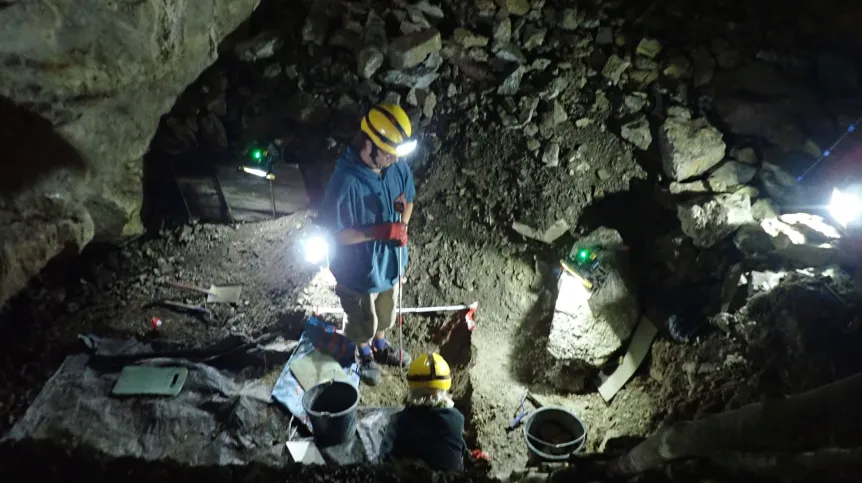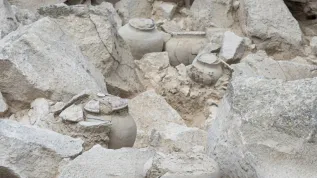
About 15,000 years ago, hunters from the Magdalenian culture—best known from prehistoric sites in Spain and France—ventured into the Tatra Mountains. Carrying carefully prepared stone blades and tools, they hunted local animals and left behind traces of their presence in what is now the Huczawa Cave (Hučivá diera) in the Belianske Tatras, Slovakia.
For more than a century, archaeologists had searched unsuccessfully for evidence of Palaeolithic life in the Tatras. Those efforts changed in 2022, when a team led by Professor Paweł Valde-Nowak from the Jagiellonian University’s Institute of Archaeology uncovered a 15,000-year-old human camp in Huczawa Cave.
Among the finds were blades from throwing weapons, bone needles, a fragment of a stone lamp, shell ornaments, and a large hearth surrounded by animal bones — including remains of the Alpine ibex, a species no longer found in the Tatras.
“The results from Huczawa are fascinating and groundbreaking,” said Valde-Nowak. “Never before have traces of Palaeolithic people been found in the entire Tatra Mountains. We have captured a very impressive image of a Western European population — well known from Spain, France, Germany, and Switzerland — who migrated into what is now Poland and reached the Tatra high-altitude zone.”
The team, supported by Poland’s National Science Centre, aims to reconstruct the scale and dynamics of Stone Age settlement in the mountains and its relationship to changing Pleistocene and early Holocene environments. Their latest results were published in the Journal of Anthropological and Archaeological Sciences.
In the most recent excavation season, researchers discovered another lamp with burn traces, more animal remains, and deeper occupation layers. Radiocarbon analysis confirmed the site’s age at around 13,000 BCE.
Archaeological evidence suggests the site’s inhabitants belonged to the Magdalenian culture, known for its refined flint, bone, and antler toolmaking traditions. The cave’s prominent position and year-round snow cover would have made it a striking landmark for prehistoric visitors.
“The fire we uncovered may have been a so-called technological fire,” Valde-Nowak explained. “There might have been a smokehouse or even a tannery here — perhaps the hides of hunted animals were being processed for transport. We’re still investigating that.”
Hearths of this size and preservation are rare in Magdalenian sites across Central Europe. Comparable examples are known mainly from Switzerland.
The researchers also noted that while the first settlers brought stone blades made from non-local flint, they eventually began crafting tools from local materials — a sign that they remained in the area for an extended period.
Parallel work on the Polish side of the Tatras, including at Obłazkowa Cave and Dziura Cave, has been less fruitful. Many cave sediments were disturbed or removed during post-war tourism development projects, which involved leveling cave floors and creating terraces and trails.
“This significantly reduced the chances of discovering Palaeolithic remains on the Polish side,” Valde-Nowak said. “The same happened, to a lesser degree, in Huczawa Cave, which had also been disturbed by speleologists in 2018. Fortunately, despite that, key archaeological layers survived.”
PAP - Science in Poland, Ewelina Krajczyńska-Wujec (PAP)
ekr/ zan/ mow/
tr. RL













